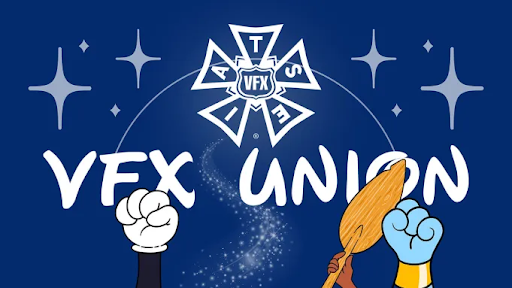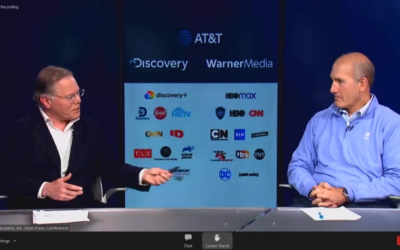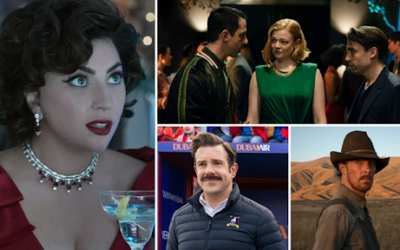Source: The Hollywood Reporter
The recently-ended Writers Guild of America (WGA) strike and ongoing Screen Actors Guild – American Federation of Television and Radio Artists (SAG-AFTRA) strike would not be possible if not for the fact that these organizations were the creation of workers coming together and fighting for better treatment. These guilds, as well as all others that can be found throughout the American entertainment industry, represent a significant portion of the industry’s labor force and go to great lengths to ensure that whoever is part of these unions is able to receive the best payment and working conditions achievable from the studios that serve as their employers. When these studios are unwilling to meet these demands, it’s the unions that bring everyone together and take to the streets to picket, as is the case with the recent WGA and SAG-AFTRA strikes. These guilds are not the only ones working on behalf of Hollywood’s thousands of laborers; in fact, the International Alliance of Theatrical Stage Employees (IATSE) covers many of the behind-the-scenes workers (including gaffers, set builders, and countless over craftspersons and technical workers) who play a significant role in allowing a given film or television program to look the way it does.
There is, however, one profession within the industry that has largely gone un-unionized throughout most of its existence: that of the visual effects worker. From big-budget blockbusters to smaller independent works, most films and television shows nowadays require some amount of digital visual effects (whether they’re noticeable or not), and these require hundreds of workers to design, create, and integrate them naturally into whatever project they are needed for. Despite the increasing need for visual effects, nearly all of this side of the industry is without a union, which makes it easier for studios to take advantage of these workers and force them into working longer hours for less-than-satisfactory pay. In fact, it’s possible that the reason why so many productions have become more reliant on visual effects is because studios are able to use them without having to contend with unions. If that’s the case, then it looks like these companies may need to start having second thoughts about how they treat visual effects workers, because if recent developments are any indication, the current state of non-unionization within the visual effects industry may be nearing its end.
On Tuesday, October 3rd, an election was held by the National Labor Relations Board in order to determine whether or not the visual effects workers employed by Walt Disney Pictures, one of Hollywood’s largest and most iconic film studios, would unionize and join the IATSE. That vote was unanimously in favor of unionization – specifically 13-0 – and as a result, the various data wranglers, witness camera operators, and various other production staff whose efforts go into the creation of the studio’s special-effects heavy productions (most notably those created by Marvel Studios, the subsidiary of Disney entirely devoted to adapting the Disney-owned Marvel Comics into feature films and streaming programs) are on the verge of receiving protection from the IATSE. In a statement release to the public, IATSE international president Matthew D. Loeb claimed that this vote represented a major break from a status quo that has long been a disadvantage to those working to create the visual effects essential to many of Disney’s biggest releases. “This unanimous vote,” Loeb claims, “sends a clear message that the demands of VFX workers for dignity, respect, and fairness must be heard.”
This is actually not the first instance in which a pro-unionization vote has taken place within the walls of the Disney studios. Just last month, around fifty visual effects workers who worked in-house voted to form a union, likewise agreeing unanimously on the issue. The overwhelming passage of such votes should come as no surprise considering that nearly all of thes workers had previously signed union authorization cards that confirm their desire to join the IATSE. It should be noted, however, that these votes only apply to those currently employed directly by Disney, as any of the third-party studios hired by Disney to create their films’ visual effects (which employ thousands of workers of their own) remain without a union at this point in time. Still, unionization for these workers is a goal that will hopefully be reached in the long run, and in the meantime, those who have already received the approval to form a union are already taking their next steps foward with this overarching plan.
As of now, the next course of action for the newly unionized visual effects workers of Disney is to begin collective bargaining negotiations with the studio so that a contract, one that will ensure that these workers are compensated properly and allowed to do their jobs safely, is written and agreed upon. Drafting a contract shouldn’t be too difficult; according to IATSE organizer, the intent it currently to have the members of this new union “work under the Basic Agreement contract already used by entertainment workers in 13 locals including the International Cinematographers Guild (Local 600), Motion Picture Editors Guild (Local 700) and Art Directors Guild (Local 800)”. That agreement, however, is currently set to expire in March 2024, at which point negotiations for a new, better contract are set to commence. Should Disney be unwilling to agree to whatever new terms are mandated by the IATSE, it’s quite possible that they will have to contend with another strike, something that, in light of the two most recent strikes taking place against it and nearly every other major studio in Hollywood, is something Disney certainly does not want at this moment.
The mission to unionize all of the visual effects industry may have only gotten so far at the time of this writing, but such a small amount of progress will undoubtedly prove essential in the long run. With a new union being formed within one of Hollywood’s most powerful studios in spite of said studio’s best efforts to prevent it, it’s only a matter of time before more unions pop out among the other studios and bring representation to those who currently have none. Visual effects artists as a whole may not be unionized yet, but if things keep going the way they are, that tide will certainly change sooner than most might expect.




